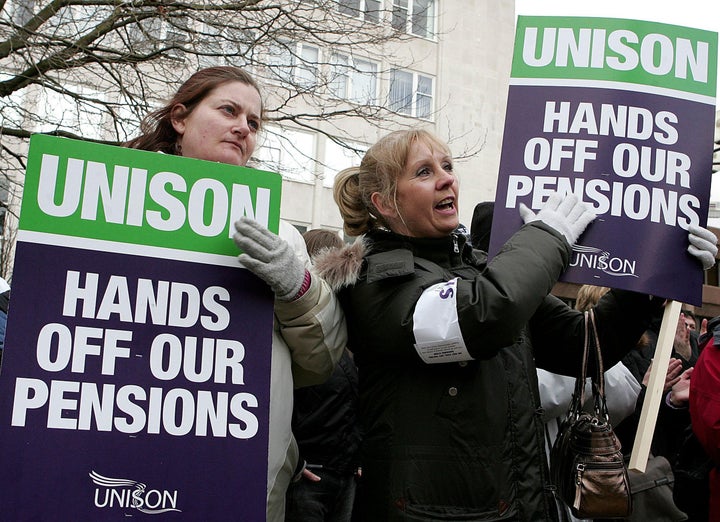
The debate over public pensions and retiree health benefits is vital, so we were heartened to see it in The Huffington Post. However, Harold Schaitberger's recent piece misrepresents our work and the realities facing state and local governments. Here are five truths about state and local pensions.
1) Public pension funds face real funding challenges in a majority of states.
In fiscal year 2010, public pension funds as a whole were only 75 percent funded and had a shortfall of $757 billion between what they should have set aside to pay for the benefits promised to workers and retirees and what they had on hand. While some states, like New York, North Carolina, and Wisconsin, have well-funded and well-managed plans, the majority of states face significant challenges. Thirty-four states were less than 80 percent funded -- a threshold many experts recommend for health pension systems.
This problem is the result of a decade of states taking pension holidays and raising benefits without paying for them, not the Great Recession. Investment gains of 20 and 13 percent in 2009 and 2010, respectively, were not nearly enough to overcome losses from the financial crisis, and pension funding levels continued to drop. The weak returns of less than 1 percent at the end of 2011 also show how hard it will be for states to invest their way out of this crisis. Initial projections suggest that funding levels will be stagnant in fiscal year 2011, and in some states will continue to drop.
2) The funding gaps have real impacts on taxpayers and states' budgets.
The pressure on state budgets springs from policy makers' failure to keep up with their pension fund contributions. States don't have to close the $757 billion gap in one year or even five. Like a home mortgage, they can spread the costs over 30 years. But they have to make their full payments as recommended by their actuaries, and each year they underfund their pensions, their costs will grow.
New York and New Jersey both had fully funded pension systems in 2000. In the following decade, New York consistently made its full contributions into its pension plans, while New Jersey failed to do so. Now New Jersey has an unfunded liability of $36 billion. To catch up, it will have to contribute $2 billion per year more than New York, even though New York has a much bigger pension system. That's $2 billion that New Jersey could be using to build roads, improve schools, and offer raises to police officers and teachers.
3) Policy makers must be responsible stewards of their pension plans.
It is easy to blame unions or Wall Street for states' pension problems. But policy makers are the ones who made promises they couldn't afford, didn't pay for, and now can't keep. Recent investment losses have hurt pension plans, but the decline in pension funding started before then -- largely because some policy makers shortchanged their retirement systems for years and relied heavily on investment gains that never materialized. Now, these same states can't count on investing their way out of this funding crisis.
In states with well-managed pension systems, such as North Carolina and New York, the Great Recession did not wreak havoc on pension plans, and these states haven't had to make drastic changes in their plans to meet their obligations.
4) There are no simple fixes.
States with large funding gaps can't simply cut benefits for new employees or put them in a 401(k)-style plan. Either they will have to funnel more taxpayer dollars into the system, or they will have to ask workers to contribute more or accept less in benefits. States that have gotten into trouble by failing to keep up with required contributions, promising more than they can afford or taking investment risks will have to adjust their plans. Pension reform needs to be fair, comprehensive, and sustainable. Real reform will require hard choices, good information, and thoughtful analysis.
5) States need to make sure retirement benefits are there for retirees and affordable for taxpayers.
Some states with well-managed pension plans can continue providing benefits as long as they are disciplined about paying the annual required contributions and don't promise additional benefits they can't afford. However, many states can't continue with the status quo. These states do not face challenges because public employees and taxpayers did anything wrong -- public employees helped pay for their retirement with every pay stub. Rather, policy makers in many states did not responsibly hold up their end of the bargain. Now they need to reduce their growing pension costs while still crafting retirement plans that will help them attract and retain talented workers. Fortunately for the states that need reform, they have a range of options that can help achieve both.